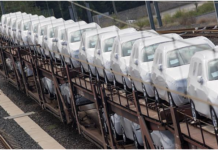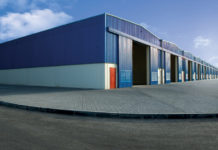In many regions of Australia, uncontrolled dust can cause significant issues, including reducing the air quality, damaging the roads, and causing severe health issues for individuals. Therefore, to avoid these negative consequences, effective dust management must be put into place.
By improving the containment of dust and ensuring that the appropriate technology is utilised on projects where dust is being produced, enormous cost savings and environmental and health benefits can be realised.
Read on to learn everything you need to know about the best dust suppression technology in Australia.
1. Why is dust suppression necessary?
Too much dust can cause adverse health and environmental consequences as it negatively affects air quality, destroys the encompassing land, and increases health risks for the surrounding community. Also, sites with a significant amount of airborne dust are dangerous for workers who spend time there as the dust particles increase their risk of respiratory disease and occupational eye problems.
Dust affects individuals’ health and well-being and the environment, and slows down a project’s efficiency while increasing the possibility of safety risks. After all, when a worker has too much dust surrounding them, it leads to poor visibility and machinery’s rideability. Unfortunately, in many cases, when dust enters machinery, it damages it, causing increased maintenance costs.
With all of these reasons, it is thus crucial to have an effective dust suppression strategy that ensures you are keeping both your project site and the surrounding area safe.
2. What are the benefits of dust suppression technology?
Unfortunately, too many project sites only use water to reduce dust, but this is not effective because water cannot capture fine dust as it is hydrophobic. Therefore, the most reliable way to ensure that you are keeping your project site and the surrounding area safe is to utilise dust suppression technology.
Ideally, you want to be using technology that involves specially formulated liquid polymer products. This type of product is critical as it attaches to the fine dust particles and stops them from becoming airborne. No other strategy can achieve this.
The best dust suppression technology will encourage process efficiency, produce sustainable infrastructure outcomes, and enhance community health, safety and environmental outcomes. Additional benefits of an effective dust suppressant system include increased road durability, improved road safety, lower road maintenance costs, and improved environmental protection.
3. When should dust suppression technology be utilised?
There are a variety of instances in which dust suppression technology should be utilised. For starters, all projects on a construction site should incorporate dust suppression strategies as these are areas that produce a large amount of dust. For similar reasons, demolition projects also require this type of technology.
Additionally, projects in the mining, civil, agricultural, resources, land development, and environmental management sectors often require dust suppression technology to decrease threats to the health of the surrounding people and environment.
Products such as GRT: Activate and GRT: Wet-Loc are appropriate for various soil types and raw material stockpiles and are effective under extreme weather conditions. These polymer-based dust suppression products can be deployed quickly and easily, without any adverse consequences on the environment.
4. What are the differences between dust suppression technologies?
GRT has created and developed a range of dust suppression technologies that are suitable for a variety of different applications. While their usage may differ, all of these products are easy to use, highly efficient, and cost-effective. Moreover, they can be attached to equipment you already own, including spray systems and water trucks.
For the most part, GRT’s dust suppression technologies can be categorised into six main product groups. They are:
1. GRT: Haul-Loc: An ultra-concentrate that improves water cart operations’ efficiency and effectiveness by up to 500%. It is primarily used to improve safety on haul roads.
2. GRT: ACTIVATE: A state-of-the-art dust suppression technology injected through existing spray systems or trucks to make water more effective. It is generally applied to quarrying crushers and conveyors and for road construction.
3. GRT: ACTIVATE UG – For underground mining, this product is added into water supply lines and diffused through spray systems.
4. GRT Wet-Loc: A long-lasting, waterless application designed to absorb into soil particles to prevent them from becoming airborne. Ideal for underground mining roads, areas of heavy damaging traffic, and race tracks.
5. GRT5000: A robust and polymer-based technology that forms a layer on the surface of a road, farm track or open area. It is effective even with a high amount of traffic or adverse weather.
6. GRT: Broadscale Applications: GRT also has additional specially designed products for farming, resources, ore stockpiles and demolition sites.
No matter what your dust suppression needs are, there is a GRT technology that will work for you.
Are you in need of products suitable for dust suppression in Australia? If so, are you considering using specially formulated liquid polymer products? Why or why not? Let us know your thoughts and any additional questions you may have in the comments below!
AUTHOR BIO Troy Adams is the Managing Director of Global Road Technology, an international engineering technology company in Australia that specialises in engineered solutions for dust suppression, erosion control, soil stabilisation and water management. A pioneering, socially conscious Australian entrepreneur, Troy is passionate about safer, healthier and more cost-effective solutions in the mining and infrastructure sectors and beyond.







